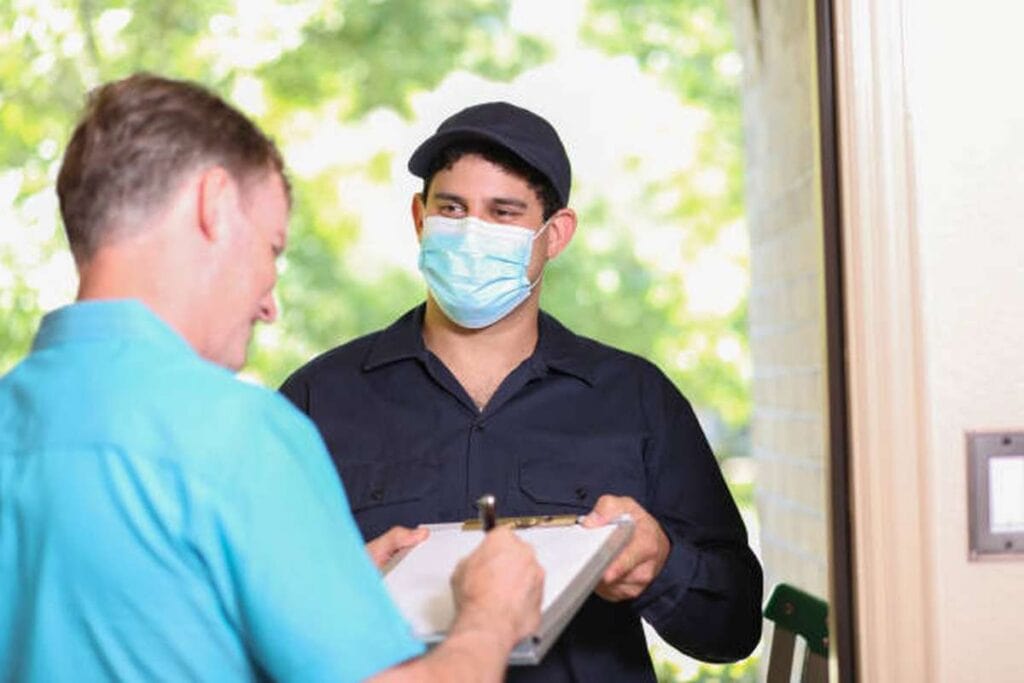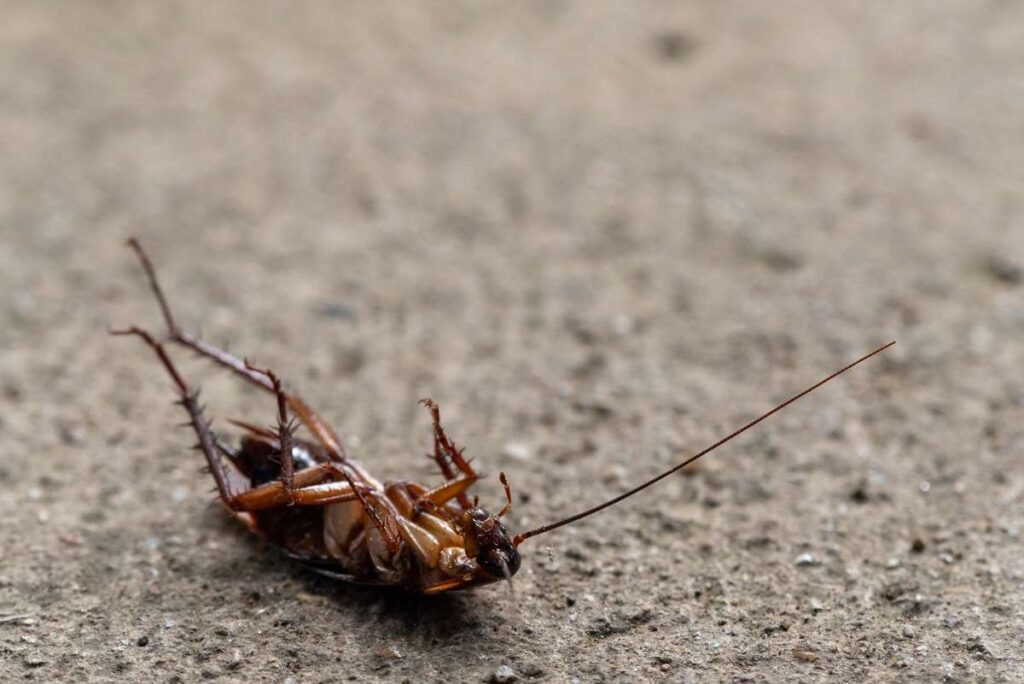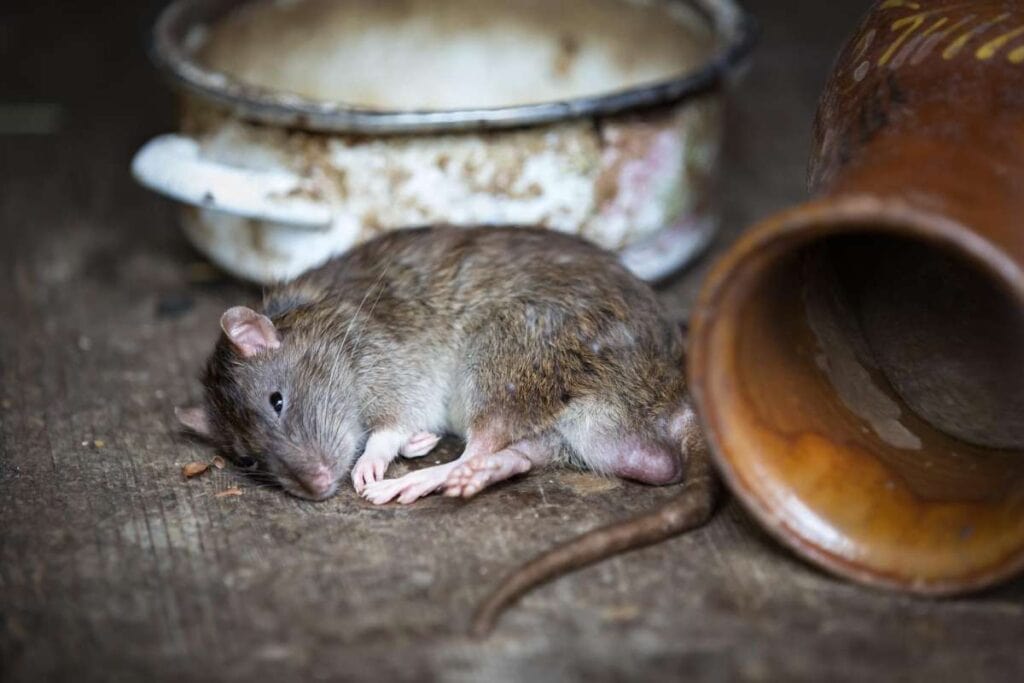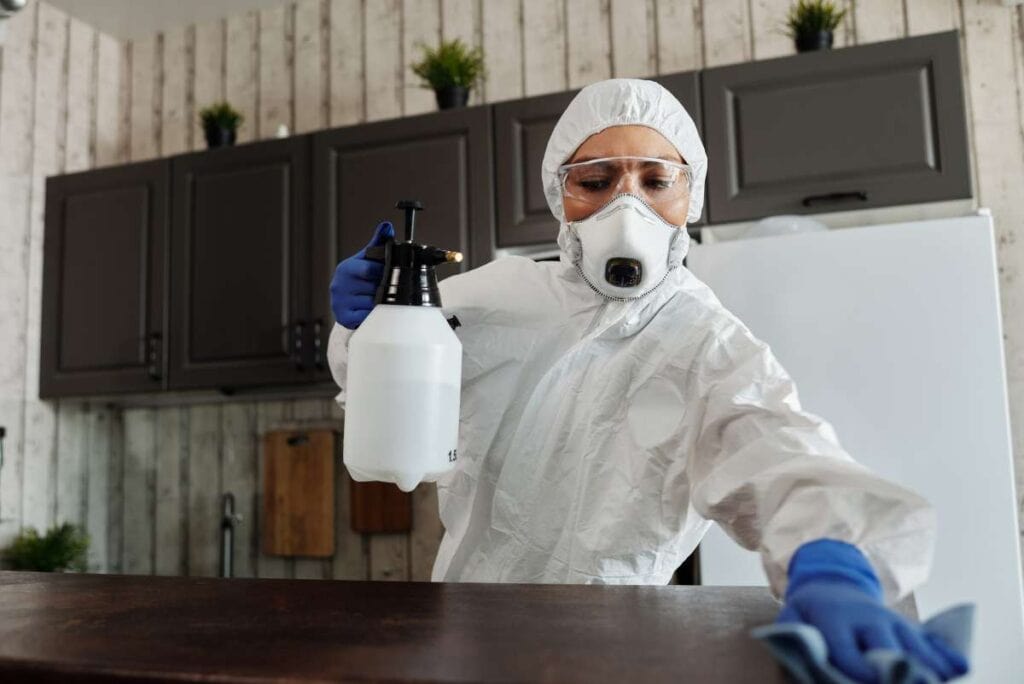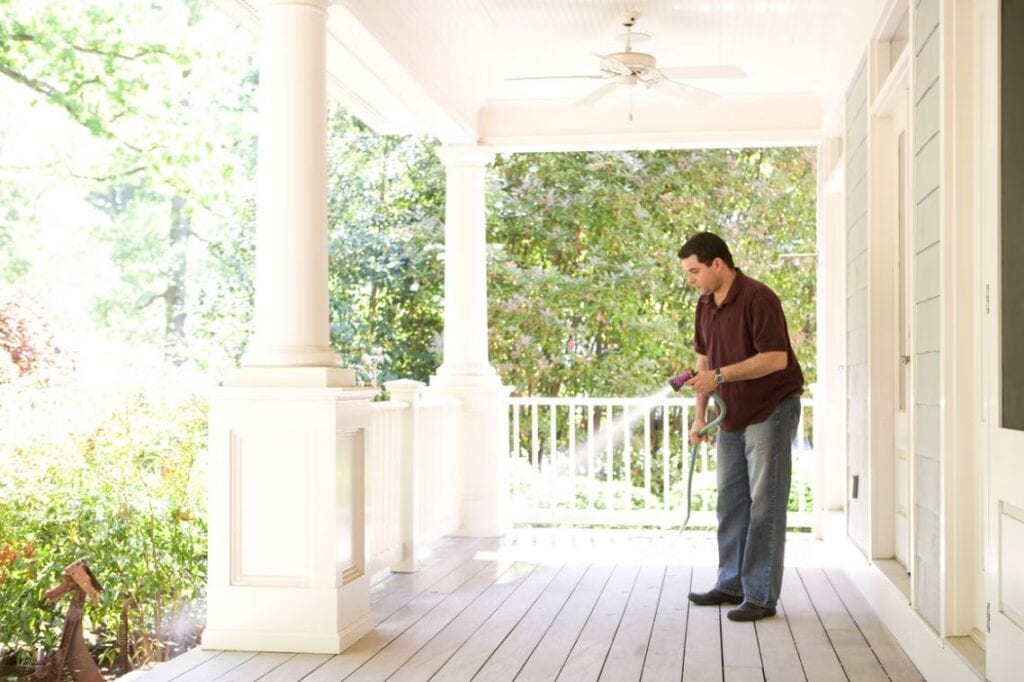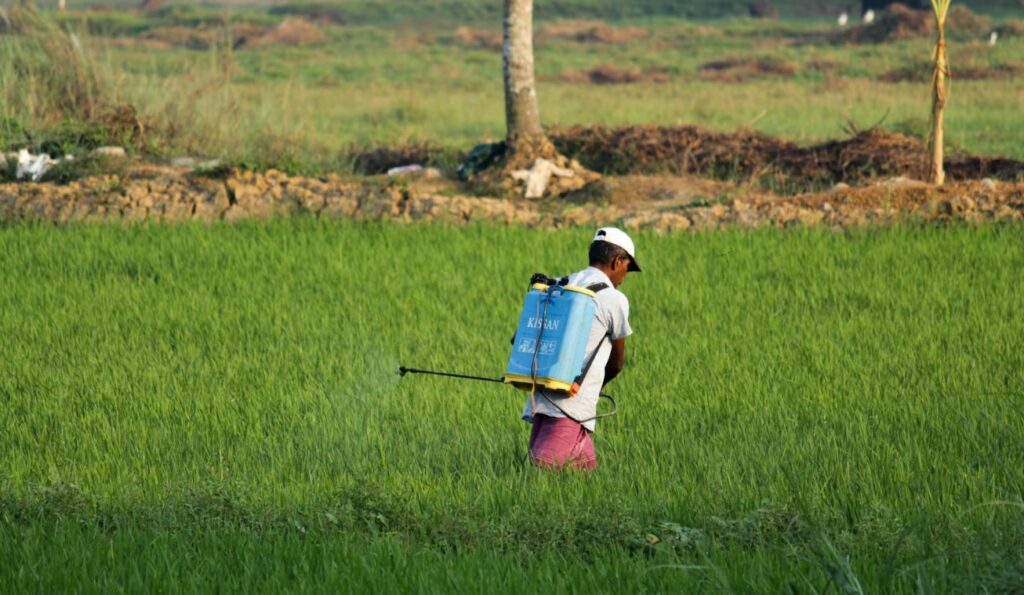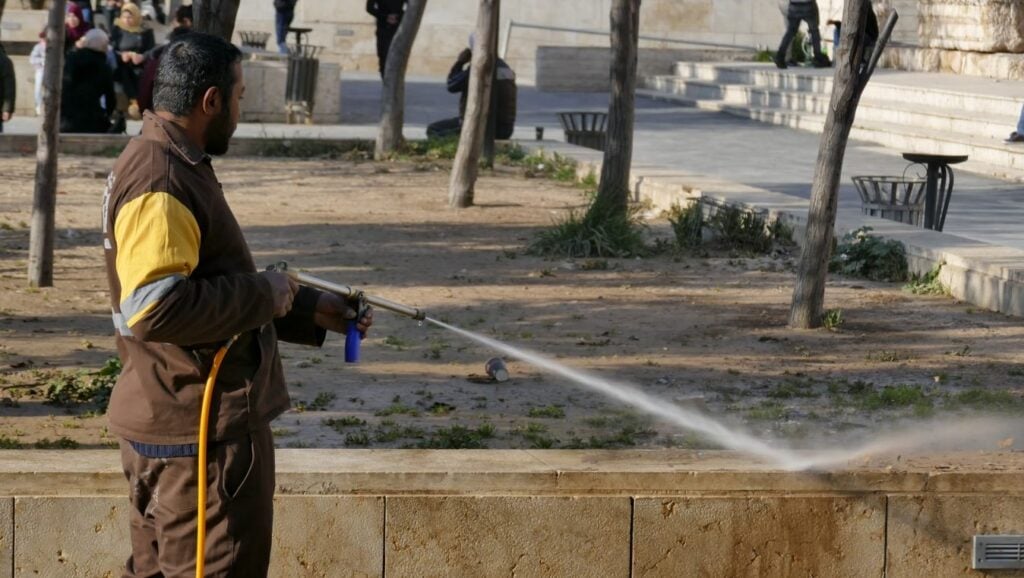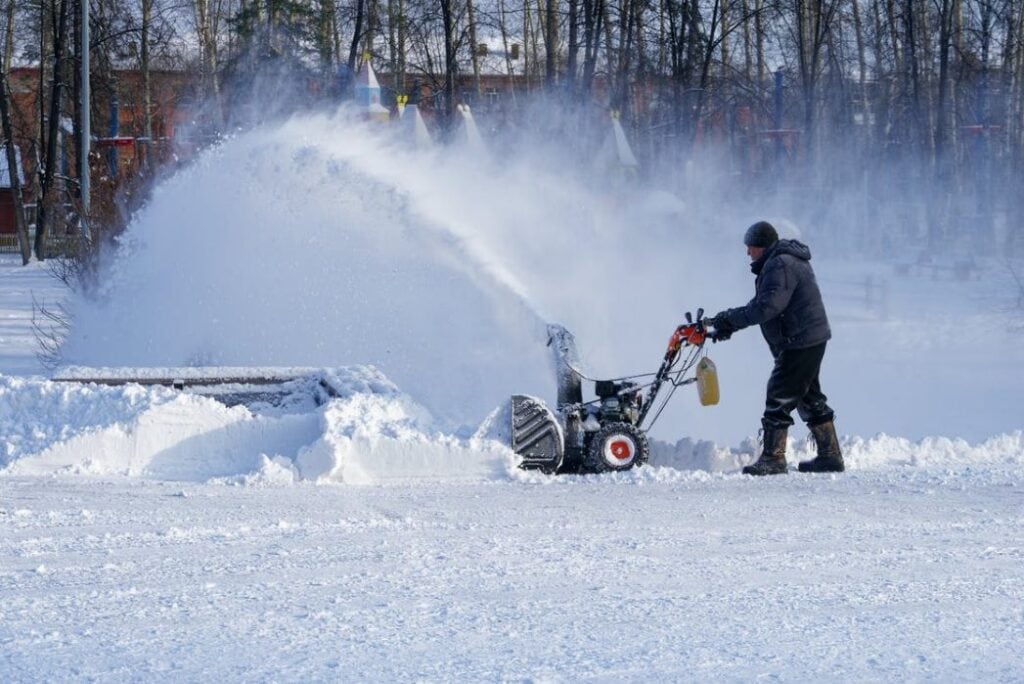Have you ever considered what might be the key to reducing the population of wasps and bees? As spring approaches, many are ready to take precautions against stings by securing their homes. Using pesticides and establishing traps are the most apparent ways. Bee and wasp infestations have been successfully decreased using these tactics.
And those aren't the only options that can be thought of. You have a lot of choices, from natural bug sprays to professional bug removal services. Now, without further ado, let's learn how to keep your environment safe and comfortable from wasps and bees.
Knowledge of Wasps and Bees
Bees and wasps: how to identify them by looking at their bodies and how they act.
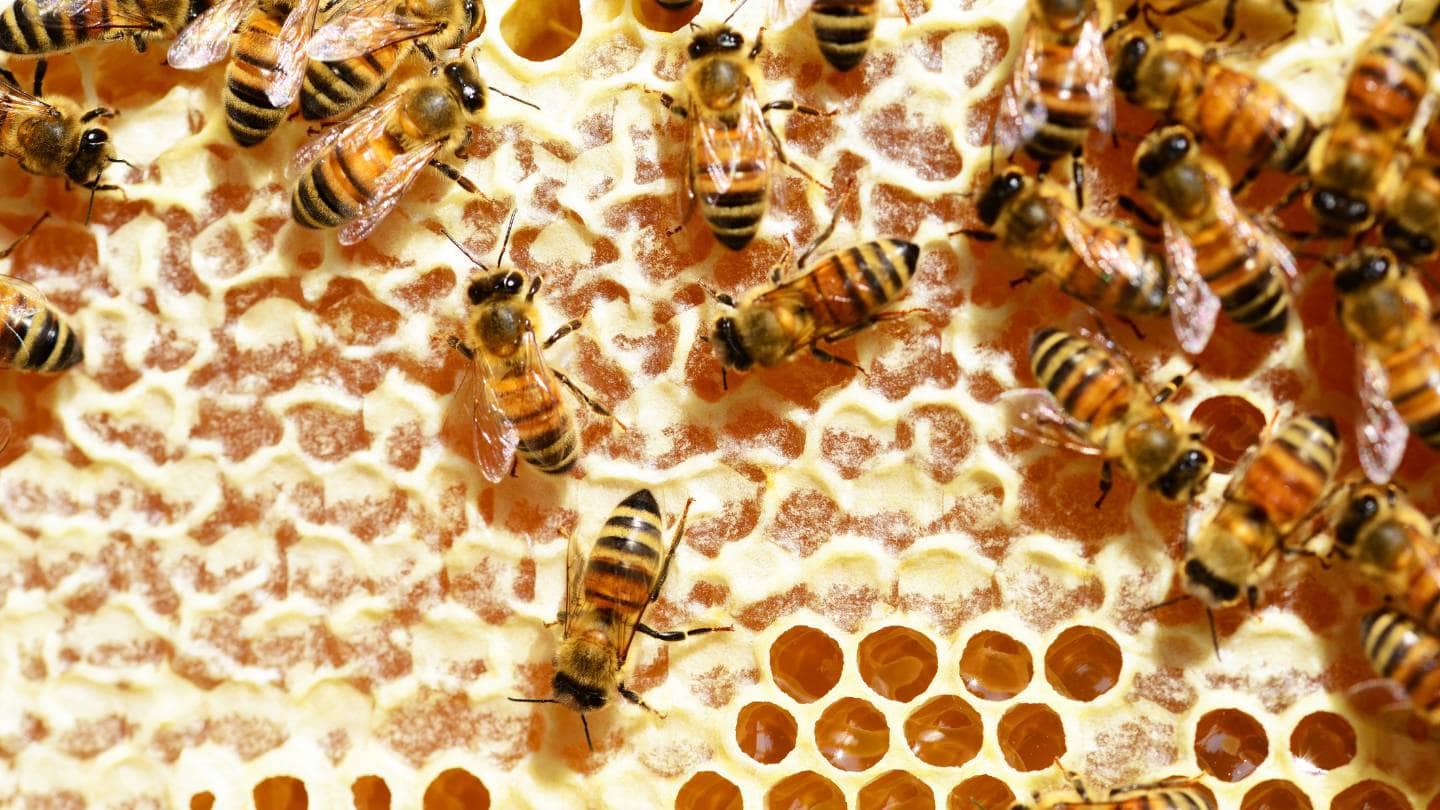
Bees:
Features of the Body:
- Fuzzy Bodies: The hairy bodies of bees help them capture pollen.
- Apex Body Shape: Bees' bodies are generally rounder and wider.
- Color Variations: They come in various colours, including black, brown, and yellow.
Behaviours:
- Pollinators: Pollination is an essential process that bees help flowering plants through their reproductive cycles.
- Social Structure: Colonies consist of a queen, workers, and drones, and bees are mostly social insects.
- Diet: Bees in their adult stages subsist mostly on pollen and nectar.
Wasps:
Physical Characteristics:
- Smooth Bodies: Compared to bees, wasps often have less hair and a smoother body.
- Slender Body Shape: The body form of wasps is often more elongated and slim.
- Bright Colors: They frequently display vibrant red, yellow, or black patterns.
Behaviours:
- Predators: Many kinds of wasps eat other insects and bugs.
- Social and Solitary Species: Some wasps live alone and wasps that live in groups.
- Diet: Although they mostly feed on nectar, adult wasps occasionally hunt for other insects.
What to Look for If You Have a Wasp Problem
Pest wasps are notoriously outspoken, unlike more reticent insects and rodents like honey bees and mice. Given their visibility, any issues shouldn't go unnoticed. Seek out these indications.
Wasps
themselves are the first indication of a wasp infestation. Wasps resemble bees in appearance, but they lack fuzz and have longer, slimmer bodies. An infestation is indicated if wasps fly into or around your house or if you come across one of their nests. These infestations are tiny at first, perhaps consisting of only a few wasps, but their colony expands rapidly in a couple of days or weeks.
Wasp Nests
Nests are another indicator of an infestation. Wasp nests are commonly located under eaves or other exposed surfaces. You might be unable to spot the nest if it's hidden like a crack in the wall. On the other hand, the void entrance will reveal the wasps flitting in and out.
The nesting grounds of wasps might be found in obscure places, such as under shrubs or trees. These nests are fiercely territorial, and you might not even see them until you start cutting them. Be on the lookout for the three kinds of wasp nests listed below.
Paper Wasp Nests:
These structures resemble umbrellas and are crafted from a substance similar to paper. They resemble combs, which is a common visual representation of beehives.
Bald-Faced Hornet Nest:
Large, distorted nests are made by Bald-faced hornets from a substance that resembles paper. Most people picture This kind of nest when they hear the word "hornet nest." Their shape is like a football, according to some.
Mud Dauber Nest:
Mud dauber wasps build their home entirely out of mud, as its name suggests. Their nests are little cylindrical clay tubes fastened to the wall and even the ceiling. These nests are substantially smaller than the other varieties and usually blend in with their environment.
Classic Bee Infestation Warning Signs
Indulging in a delightful dinner away from home is an experience like no other. Why leave the house when you can have a delightful picnic in the comfort of your own home? Get some beverages, gather some pals, and prepare for a blast.
While that may sound nice in theory, nothing can ruin a meal with friends like a swarm of wasps or a horde of bees buzzing around you. If somebody in your group is terrified of those bugs, this becomes an even bigger issue.
So, mayhem has broken out, and you're asking, "Where did it come from?" To begin with, it's improbable that your organisation will suddenly be inundated. Consider the consequences if this had occurred in a corporate or office environment. Things would get much more disorganised. A few warning signals that it's time to contact a pest control service is
An Incessant Buzzing Sound.
It won't be easy to ignore the sound if a wasp or bee nest is on your land. It's not one of your machines, and it's not electricity. There is a unique sound that is difficult to ignore when wasps and bees congregate on your property. Thus, you can assume that an infestation is to blame whether you notice a steady, loud, or faint buzzing.
Holes Around the Property
Finding flaws in your property randomly and without explanation is not typical. Bees and wasps could be to blame if you notice them in one area or multiple locations throughout the site. If they act this way, they're settling in nicely on your property.
Some species, like carpenter bees, may eat through even the hardest plants on your property. There will be traces of their attempts to penetrate your walls, papers, and more. Search your business thoroughly for debris, such as sawdust. Keep an eye out for scatter since that may also be a sign of an infestation.
Hive Activity on Your Property
When you see active beehives or wasp hives on or near your property, it's a solid sign that you're dealing with an infestation or about to be. Naturally, there's always the possibility that they won't even step foot in your store.
However, there isn't much that may prevent them from establishing a residence within your property, weather permitting. Finding active hives is the first step; the next is locating dependable pest control and securely handing over the situation to them.
The Experts' Wasp-Bee Removal Method
The beeping sound can make some people more alert. For some, the sound of the buzzer is enough to set off a terrifying panic attack. The sting of a bee, wasp, or any other insect is something that almost everyone on Earth remembers painfully. If the buzzing militia has never unpleasantly stung you, count yourself lucky. Even after all these years have passed, the sharp pain of the bite, the subsequent swelling, and the terror it caused are all vividly remembered.
Prevention First,
The first step in getting rid of wasps is to keep them from coming in. Bees and wasps tend to live in hard-to-reach places, making it hard to get rid of them. The best way to keep both types out is to eliminate any food that isn't needed, like pet and bird food, cover trash cans, and eliminate any open water sources.
It is crucial to regulate what you can because bees and wasps can produce or search for their food. Ensuring there is no standing water in the open is crucial, as it can attract various insects, including mosquitoes, bees, and wasps. In general, sugary things tend to entice wasps and bees. A simple outdoor aroma may be all it takes to entice them.
Keeping your home's framework in good repair is the next step; wasps and bees will find plenty of places to set up shop in any cracks or holes that may appear. Any holes in the ground can be used as well. If you want to attract birds that will hunt for insects in the vicinity, you might even build a nest for them.
Use The Power Of Smoke
Smoke is a common, all-natural method for eradicating bees and wasps. Just build a little fire or light a grill underneath the nest. Inspect the nest to ensure smoke is ascending and entering. The wasps will have no choice but to leave or die of suffocation.
In about an hour or two, you should see most of the wasps either dead or searching for a new nest. The next step is to catch the nest and properly dispose of it using a stick or other long object to knock it down.
Be extremely cautious when working with any open flame, but especially close to your home, as the consequences could be disastrous. If you destroy a wasp's home and drag it down with it, it won't do you much good. When it comes to wasp management, safety is paramount.
Make Soap Work For You
To eliminate wasps, you won't require strong chemicals. Most of the time, you already have all you need to handle a little situation. If the nest is hanging, spray it with regular dish soap and water. A half-filled spray bottle with water and two tablespoons of dish soap is all needed. The wasps die quickly and humanely when the soapy water blocks their breathing spores.
Extra firepower may be necessary for larger nests. An effective method involves using a garden hose connected to water and dish soap. You need to take extra measures while dealing with larger nests because you are significantly outnumbered, and the likelihood of being stung is higher.
Use The Power Of Plants
Wasps have zero appreciation for spearmint, even though most people love its aroma and flavour. You may discourage wasps from making your house their home by planting plants like eucalyptus, spearmint, thyme citronella, and wormwood around your property. These plants will also add a lovely green hue to your home.
Destroy the Old Nest
Be careful to destroy the nest so that wasp pupae don't hatch and start a new generation of problems.
In addition, racoons, rats, roaches, and other nasty insects can find shelter in abandoned nests.
Protective Remnant Treatment:
Apply a residual pesticide that discourages wasps while you are inspecting. To help eliminate freshly emerging queens and stop them from laying eggs, apply a liquid residual-type solution under the eaves in the early spring.
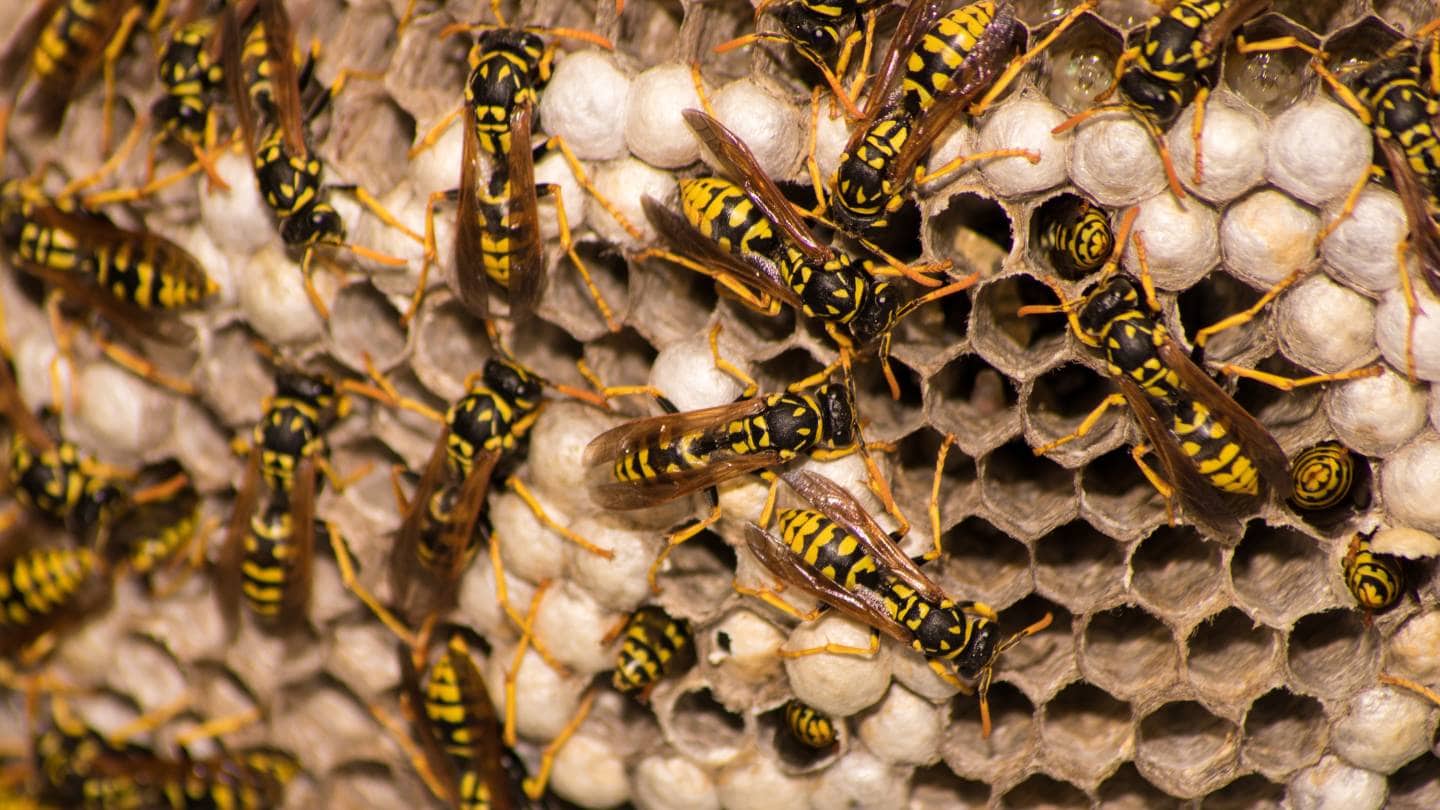
Hire a Professional Wasp Control Service
To remove wasp nests safely and effectively, hiring a professional wasp control service is sometimes necessary. The following are examples of when it's wise to consult an expert:
Large Nest Size
A big wasp nest on your property should prompt you to seek expert help. The danger of stings and the difficulty of removal are increased in large wasp nests, which can contain thousands of wasps.
Aggressive Wasps
Wasps, especially yellow jackets, can be very aggressive and even swarm an area in an attack if they feel threatened. Only trained exterminators have the tools and knowledge to deal with dangerous wasp nests safely.
Nest Location
Get the pros in if the wasp nest is in a dangerous or difficult-to-reach spot, such as a wall hole, under a tall building's eaves, or close to electrical wires. Removing a nest in an inconvenient spot without the proper tools is risky.
Previous Allergic Reactions:
Take extra precautions to avoid wasp stings if you or your family has a history of allergies. Hiring a professional wasp control service is the best way to get rid of the nest without endangering anyone with allergies.
Repeated Infestations
Repeated wasp infestations indicate a more serious problem that requires the intervention of an expert. Finding the source of the infestation and putting measures in place to stop it from happening again is the job of a professional exterminator.
Conclusion
Pesticides, netts, natural bug sprays, and professional bug removal services are all ways to get rid of bees and wasps. Bees' bodies are bigger and wider, and they come in many colours. Their fuzzy bodies help them catch pollen. They are mostly social insects that eat pollen and nectar when they are adults. Wasps are hunters and have brightly coloured, smooth bodies that are long and thin.
Most of the time, wasp infestations start out small but can quickly get worse. You can find them under eaves or on open areas, where they often hide in cracks in the wall. It lists three kinds of wasp nests: The nests of the paper wasp, the bald-faced hive, and the mud dauber.
A constant buzzing sound, holes around the property, and signs that they tried to get into walls, papers, and other things are all classic bee swarm warning signs. Pests that are built in, like carpenter bees, can also eat through hard-to-reach places, so it's important to look for trash and other signs of an invasion.
Poisons, traps, natural bug sprays, and professional bug removal services are all ways to get rid of bees and wasps. Knowing what these pests look like and how they act will help you keep your space safe and comfy. If you see any signs of an issue, you should call a pest control service right away.
If bees are visiting your property, you have an issue, and you need to find reliable pest control right away. Get rid of food that isn't needed, cover trash cans, and get rid of open water sources to get rid of wasps. Wasps and bees are drawn to sweet things, and birds are drawn to homes that are in good shape.
Build a fire or grill under the nest and use smoke as a natural way to get rid of bees and wasps. Check the nest to make sure smoke is rising and coming in. The wasps will either leave or die of exhaustion. Use a stick or some other long object to catch the nest and throw it away. When dealing with an open flame, especially near your home, be very careful because bad things could happen.
Spray dish soap and water on the nest to make soap work for you. This will stop the spores from breathing. For bigger nests, hook up an outdoor hose to water and dish soap. Eucalyptus, spearmint, thyme citronella, and wormwood are some plants that you can put around your property to keep wasps from coming inside.
Getting rid of the old nest will stop wasp eggs from hatching and causing more trouble. While you're checking, use a residual pesticide that keeps wasps away, and in early spring, use a liquid residual-type solution under the eaves.
Sometimes, you need to hire a professional wasp control service to get rid of wasp nests in a safe and effective way. Some examples are large nest sizes, aggressive wasps, nest locations, allergic responses in the past, and infestations that happened more than once.
Content Summary
- Reducing bee and wasp populations can be achieved with various control methods, particularly as spring approaches.
- Common methods include using pesticides and setting up traps to prevent stings.
- Other options range from natural repellents to hiring professional removal services.
- Identifying bees and wasps involves noting their body features and behaviours.
- Bees have fuzzy bodies, round shapes, and are predominantly black, brown, or yellow.
- They play a crucial role in pollination and have a social structure involving queens, workers, and drones.
- Wasps have smoother, slender bodies and display bright colours like red, yellow, or black.
- Wasps can be predatory and exist in both social and solitary species.
- Identifying a wasp problem includes observing the insects themselves and finding their nests.
- Wasp nests are often located under eaves or other sheltered areas.
- Three types of wasp nests include paper wasp nests, bald-faced hornet nests, and mud dauber nests.
- Signs of bee infestations include a constant buzzing sound and holes in property structures.
- Active beehives or wasp hives on the property are a strong indicator of an infestation.
- Prevention is the first step in controlling bees and wasps, including removing attractants.
- It's important to maintain property structures to prevent bees and wasps from settling.
- Using smoke is a natural method to eradicate bees and wasps.
- Soapy water can be used effectively to eliminate small wasp nests.
- Larger nests may require the use of a garden hose with soapy water.
- Planting wasp-repellent plants like spearmint and thyme citronella can deter wasps.
- Old nests should be destroyed to prevent new generations of wasps.
- Applying residual pesticides helps prevent new queens from establishing nests.
- Professional wasp control services are necessary for large nests, aggressive wasps, or difficult locations.
- Large wasp nests pose a significant threat due to their size and number of wasps.
- Aggressive wasp species like yellow jackets require professional handling.
- Nests in hard-to-reach or dangerous locations should be handled by experts.
- If there's a history of allergic reactions to stings, professional removal is advised.
- Repeated infestations suggest a deeper issue that needs expert intervention.
- Bees and wasps can find food sources or produce their own, making control challenging.
- Standing water can attract various insects, including bees and wasps.
- Ensuring no cracks or holes in the property can prevent nesting.
- Bird feeders can attract birds that prey on insects, aiding in pest control.
- Creating smoke under a nest can force wasps to leave or suffocate.
- Care must be taken when using open flames near homes for wasp control.
- A mixture of dish soap and water can effectively kill wasps.
- Additional precautions are necessary when dealing with larger wasp nests.
- Destroying old nests is crucial to prevent new infestations and shelter for other pests.
- Early spring applications of liquid residual-type solutions can prevent queen wasps from nesting.
- Identifying bee and wasp species is key to implementing effective control measures.
- Bee and wasp control should be environmentally responsible and safe.
- Carpenter bees can cause structural damage by boring into wood.
- Regular property inspections can help detect early signs of infestations.
- Hiring professionals ensures the safe and efficient removal of nests.
- Professional services have the necessary tools and expertise for pest control.
- Understanding the habits of bees and wasps aids in developing control strategies.
- Bee and wasp control contributes to maintaining ecological balance.
- Safe bee and wasp control protects these important pollinators.
- Bee and wasp control is an ongoing process requiring regular monitoring.
- Professional pest control services offer comprehensive solutions for infestations.
- Effective control methods vary depending on the type and extent of infestation.
- Bees and wasps play vital roles in ecosystems, requiring careful management.
Frequently Asked Questions
Proceed cautiously if you discover a bee or wasp nest on your property. Avoid disturbing the nest, keep pets and children away from the area, and contact a professional pest control service for safe removal.
Yes, bees and wasps can cause damage to your property. They may build nests in walls or structures, disrupt landscaping, and damage plants by feeding on nectar and sap.
Signs of a bee or wasp infestation include increased activity of these insects, visible nests in trees or structures, frequent stinging incidents, and damage to property such as structures or landscaping.
Yes, bees are crucial in pollinating plants and essential for producing many fruits, vegetables, and flowers. They contribute to increased crop yields and promote a healthier ecosystem.
If you get stung by a bee or wasp, remove the stinger if present, clean the area with soap and water, apply a cold compress to reduce swelling, and monitor for allergic reactions. Seek medical attention immediately if you experience severe symptoms.





